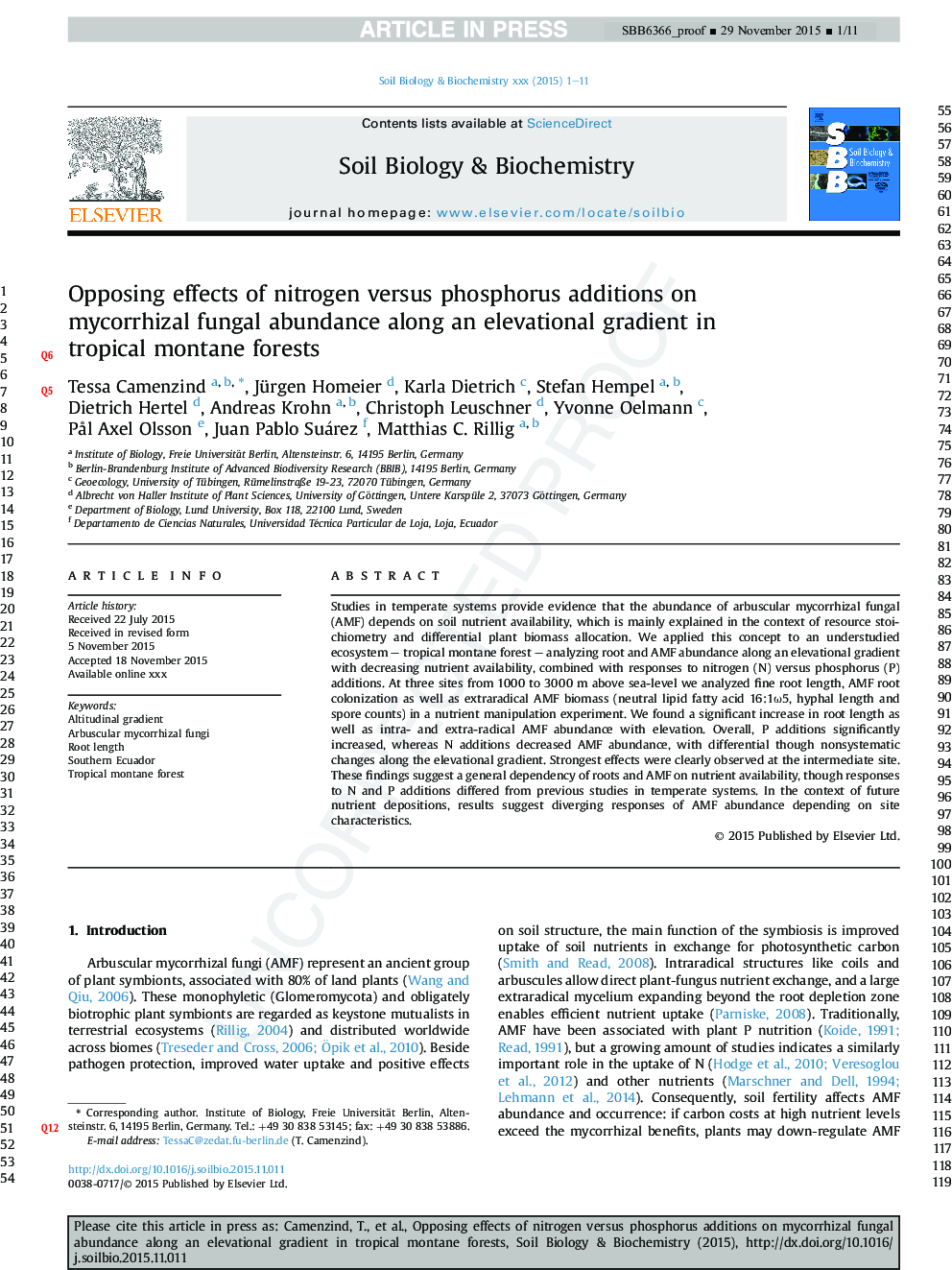| Article ID | Journal | Published Year | Pages | File Type |
|---|---|---|---|---|
| 8363587 | Soil Biology and Biochemistry | 2016 | 11 Pages |
Abstract
Studies in temperate systems provide evidence that the abundance of arbuscular mycorrhizal fungal (AMF) depends on soil nutrient availability, which is mainly explained in the context of resource stoichiometry and differential plant biomass allocation. We applied this concept to an understudied ecosystem - tropical montane forest - analyzing root and AMF abundance along an elevational gradient with decreasing nutrient availability, combined with responses to nitrogen (N) versus phosphorus (P) additions. At three sites from 1000 to 3000Â m above sea-level we analyzed fine root length, AMF root colonization as well as extraradical AMF biomass (neutral lipid fatty acid 16:1Ï5, hyphal length and spore counts) in a nutrient manipulation experiment. We found a significant increase in root length as well as intra- and extraradical AMF abundance with elevation. Overall, P additions significantly increased, whereas N additions decreased AMF abundance, with differential though nonsystematic changes along the elevational gradient. Strongest effects were clearly observed at the intermediate site. These findings suggest a general dependency of roots and AMF on nutrient availability, though responses to N and P additions differed from previous studies in temperate systems. In the context of future nutrient depositions, results suggest diverging responses of AMF abundance depending on site characteristics.
Keywords
Related Topics
Life Sciences
Agricultural and Biological Sciences
Soil Science
Authors
Tessa Camenzind, Jürgen Homeier, Karla Dietrich, Stefan Hempel, Dietrich Hertel, Andreas Krohn, Christoph Leuschner, Yvonne Oelmann, PÃ¥l Axel Olsson, Juan Pablo Suárez, Matthias C. Rillig,
